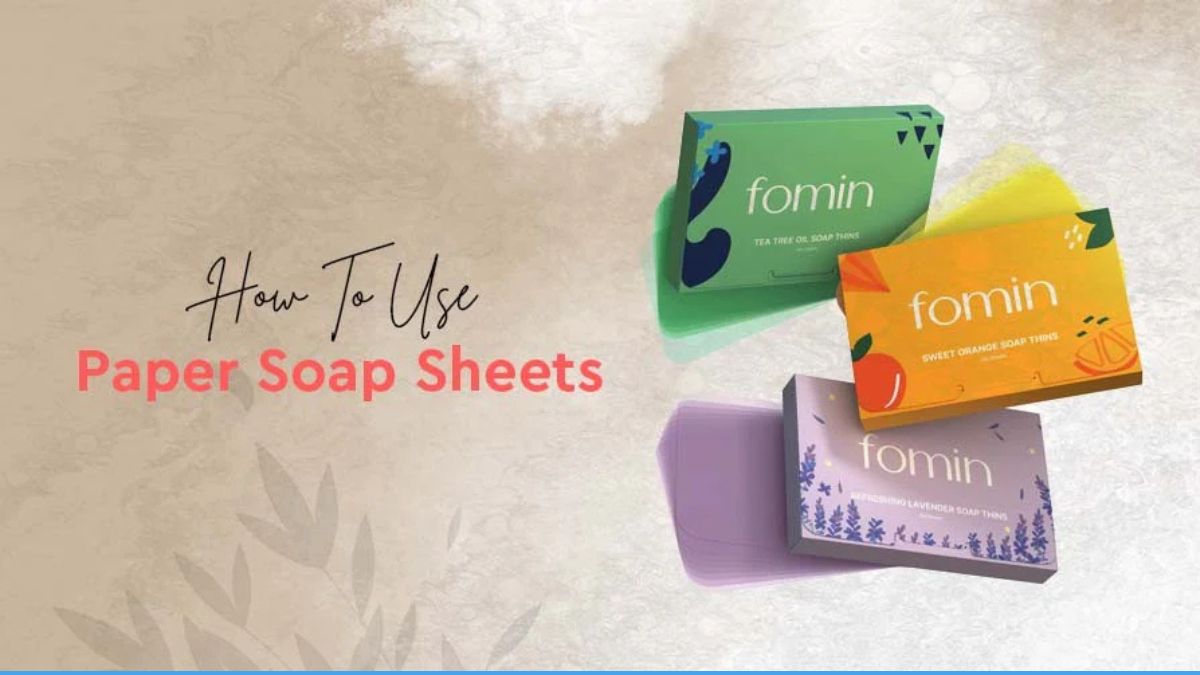In today’s hygiene-conscious world, paper soap has become a smart, eco-friendly alternative to traditional handwashing options. Whether you’re traveling, camping, working in an office, or using a public restroom, paper soap sheets offer a lightweight and convenient solution for staying clean. However, many people still don’t know how to use paper soap properly.
What is Paper Soap?
Paper soap consists of ultra-thin, water-soluble sheets made from soap ingredients that dissolve instantly when in contact with water. Once wet, these sheets produce a soapy lather that cleans your hands just like traditional soap.
Paper soap is typically packed in small, portable containers that easily fit into a pocket or handbag. These sheets are often scented and come in various fragrances, such as lemon, rose, lavender, and mint.
Common Uses of Paper Soap
Paper soap is ideal for:
- Travel (airports, trains, roadside stops)
- Outdoor activities (camping, hiking, trekking)
- Public washrooms without soap
- Office or school hygiene
- Emergencies or backup hygiene option
READ MORE: Dettol Soap Manufacturer Fined Rs. 15 Million for False Advertising Claims
How to Use Paper Soap: Step-by-Step Guide
Step 1: Open the Container
Unseal or flip open the small case to access the sheets inside.
Step 2: Take Out One Sheet
Use dry hands to remove a single sheet. Wet fingers may cause the sheets to stick or dissolve.
Step 3: Wet Your Hands
Find a clean water source. Wet both hands thoroughly.
Step 4: Rub the Sheet Between Your Palms
Place the paper soap sheet in your wet hands and rub them together gently. It will dissolve quickly and produce a rich lather.
Step 5: Wash for at Least 20 Seconds
Scrub all parts of your hands — palms, backs, between fingers, and under nails — for 20 seconds.
Step 6: Rinse Off the Soap
Rinse thoroughly with clean water to remove all lather and dirt.
Step 7: Dry Your Hands
Use a clean towel, tissue, or hand dryer to dry your hands completely.
Key Benefits of Paper Soap
- Portable and lightweight: Carry it easily in your bag or pocket.
- Spill-proof: No leakage, unlike liquid soap.
- Eco-friendly: Many brands use biodegradable materials and recyclable packaging.
- Hygienic: One-time use per sheet minimizes germ transmission.
- Travel-friendly: Complies with travel liquid restrictions and is ideal for trips.
Tips for Safe and Effective Use
- Keep the container dry and sealed.
- Do not expose to humidity or water before use.
- Always use with clean water.
- Not intended for washing clothes or large surfaces.
READ MORE: Unilever Fined Rs 6 Crore for Deceptive Soap Marketing, Others Also Accused
Paper Soap vs Other Soaps
| Feature | Paper Soap | Liquid Soap | Bar Soap |
|---|---|---|---|
| Portability | Excellent | Moderate | Poor |
| Shelf Life | Long | Short | Long |
| Hygiene | High (single-use) | Moderate | Low (if shared) |
| Eco-Friendly | High | Varies | High |
| Convenience | Very High | High | Medium |
Conclusion
If you’re often on the go or prefer a more sustainable hand hygiene solution, paper soap is an excellent choice. It’s compact, easy to use, and highly effective in maintaining cleanliness when traditional soap is unavailable.
Now that you know how to use paper soap properly, you can confidently keep your hands clean wherever you are — whether it’s a hiking trail, roadside stop, or a public place without hygiene facilities.









